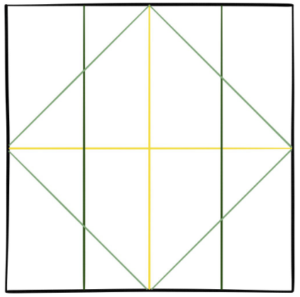- MN ABE Connect
- Archive
- Routines That Foster Constructing Viable Arguments and Critiquing the Reasoning of Others – Part 1
 September 9, 2022
September 9, 2022
Routines That Foster Constructing Viable Arguments and Critiquing the Reasoning of Others – Part 1
Lindsey Pust, Numeracy & Special Projects CoordinatorThe start to a new school year often brings renewed energy and enthusiasm for trying new things. No doubt you may be thinking about ways to improve “this” or “that” in your classroom or just mulling over effective and fun ways to increase student engagement. We’ve long heard it said, “Those who do the talking are doing the learning.” Even though we know this, holding back our teacher explanations, embracing awkward pauses, and creating opportunities for students to make sense of concepts, whether verbally or in writing, can be hard.
Regardless of the subject matter, there is a skill/practice that is central to any learning: the ability to construct viable and valid arguments, and to engage in critiquing the reasoning of others. This includes the reasoning of both students and teachers. Fortunately, there are routines you can put in place to help develop this skill/practice.
Side note: If you are interested in thinking more about the overlap of learning practices between different subject areas, check out this venn diagram and this explanation put out by Stanford Graduate School of Education.
But first, why routines?
In their book, Routines for Reasoning: Fostering the Mathematical Practices in All Students, Kelemanik, Lucenta and Creighton (2016) explain: “Instructional routines are specific and repeatable designs for learning that support both the teacher and students in the classroom…enabling all students to engage more fully in learning opportunities while building crucial…thinking habits” (emphasis added). Tim Berrigan, Site Manager at Brooklyn Public Library’s New Lots Adult Learning Center, paraphrases this way: “Consistent classroom routines in line with best pedagogical practices, support and enable both students and teachers to do their best thinking, wondering, and sense-making” (emphasis added) (2022, p. 14).
Why numeracy routines?
 You will notice that the routines shared below engage students with numeracy content. Hopefully the value of implementing these routines in your non-math classes is apparent! Our students are surrounded by numbers and numeric reasoning (or fallacy) on the news, at the store, in their child’s school, and within their own home—budgeting, cooking, taking medicine, etc.—every day.
You will notice that the routines shared below engage students with numeracy content. Hopefully the value of implementing these routines in your non-math classes is apparent! Our students are surrounded by numbers and numeric reasoning (or fallacy) on the news, at the store, in their child’s school, and within their own home—budgeting, cooking, taking medicine, etc.—every day.
Furthermore, developing the skill of constructing and articulating a viable/valid argument, and then being able to critically analyze others’ arguments, is at the core of these routines: a skill that is valuable in any learning. These routines have a heavy language component to them as well; vocabulary support and sentence frames can be added to meet additional goals beyond numeracy.
In this article we’ll examine one routine that you can use with your students. Stay tuned for Part 2, where we’ll explore more routines!
Routine 1: Fraction Talks
Description: Fraction talks are 10-15 minute activities that are like number talks and dot talks* but with pictures of fractions! Facilitate a fraction talk with your student(s) every day, once a week or at whatever cadence makes sense for your classroom.
Think about how you would respond to this question: The square outlined in green is what fraction of the larger square? How do you know?

Adaptations:
- Focus on one benchmark fraction at a time. (Benchmark fractions are fractions that are friendly to think about that can be used to aid in other computations or in estimation. For instance, 1/2, 1/4, 1/10.) Choose several image prompts from fractiontalks.com, and then ask the class or individual student, “Which image most closely represents one half? How do you know?” Once students have a solid understanding of ½, then focus on ¼, and so on.
- Provide sentence frames for students to interact with each other, with a teacher/volunteer, or on paper:
- ____ image most closely represents ½ because ___
- I agree with ___ because ___
- I disagree with ___ because ___
- I see what you’re saying, but what do you think about ___?
If students are interacting with a teacher/volunteer or on paper, provide a claim for them to either agree or disagree with.
- Post a Fraction Talk image each week in the classroom or on your class website. Provide a way for students to respond and interact with other responses, even if not in “real-time.”
Resources to learn more:
Fraction talks:
* For more information on number talks and dot talks:
- Video of a Number Talk with Adults, facilitated by Cathy Humphreys
- Examples from The Brown Bag Teacher
- Making Number Talks Matter by Cathy Humphreys and Ruth Parker
- Video of a Dot Talk, facilitated by Jo Boaler
- ATLAS-created CCRS workout featuring a Dot Talk: experience it for yourself with your program/team!
REGISTRATION IS OPEN FOR MATH INSTITUTE!
Friday, September 23, 2022
9:00 am – 3:00 pm CDT
Virtual via Zoom
 You really don’t want to miss this one! ATLAS is thrilled to host Dan Meyer, internationally known math educator and Chief Academic Officer at Desmos, along with top-notch local numeracy experts, for a FREE virtual conference focused on empowering students to see themselves as mathematicians who use math in everyday life.
You really don’t want to miss this one! ATLAS is thrilled to host Dan Meyer, internationally known math educator and Chief Academic Officer at Desmos, along with top-notch local numeracy experts, for a FREE virtual conference focused on empowering students to see themselves as mathematicians who use math in everyday life.
In addition, there is a 1-hour session for program managers/leaders around improving math offerings at their respective programs. We will also highlight ways MN adult ed programs have been able to successfully incorporate math instruction for all learners.
References
Berrigan, T. (2022). Slow Reveal Graphs: A Powerful Instructional Routine. The Math Practitioner, 27(3), 14.
Kelemanik, G., Lucenta, A. & Janssen Creighton, S. (2016). Routines for reasoning: Fostering the mathematical practices in all students. Heinemann Educational Books.
More information
Don’t miss Part 2 of this article series coming up at the end of September, where we’ll explore more routines that you can use with your learners!
Newsletter Signup
Get MN ABE Connect—the official source for ABE events, activities, and resources!
Sign UpArticle Categories
- ABE Foundations/Staff Onboarding
- ACES/Transitions
- Adult Career Pathways
- Assessment
- CCR Standards
- Citizenship
- COVID-19
- Cultural Competency
- Digital Literacy/Northstar
- Disabilities
- Distance Learning/Education
- ELA
- Equity/Inclusion
- ESL
- HSE/Adult Diploma
- Listening
- Math/Numeracy
- Mental Health
- Minnesota ABE
- One-Room Schoolhouse/Multilevel
- Professional Development
- Program Management
- Reading
- Remote Instruction
- Science
- Social Studies
- Speaking/Conversation
- Support Services
- Teaching Strategies
- Technology
- Uncategorized
- Volunteers/Tutors
- Writing